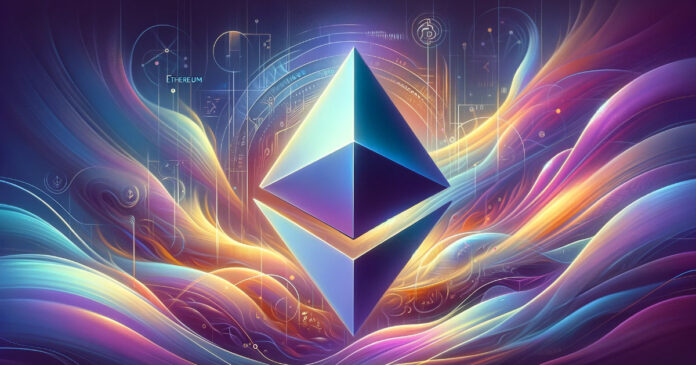Ethereum developers have tentatively decided on Jan. 17, 2024, for the upcoming “Dencun” upgrade’s first testnet deployment during the latest bi-weekly dev meeting on Dec. 21.
Originally slated for the last quarter of 2023, the ‘Dencun upgrade was pushed to 2024 due to the engineering complexities involved.
Tim Beiko, the protocol support lead at the Ethereum Foundation, noted that the date is not set in stone and could change if major issues arise. The team aims to release a blog post detailing the fork during the week of Jan. 8, 2024 — giving stakeholders a week to prepare for the update.
Dencun upgrade timeline
The meeting set out a draft timeline for the testing phase of the Dencun upgrade.
Following the Goerli testnet on Jan. 17, 2024, developers plan to run tests on other networks — Sepolia on Jan. 31, 2024, and Holesky on Feb. 7, 2024.
The developers aim to deploy the changes on the mainnet by the end of February 2024 if everything goes smoothly. However, these dates are subject to change based on the results of the testnet forks.
Dencun will be Ethereum’s first major upgrade since ‘Shapella’ earlier this year, which was a significant milestone in itself, enabling staked ether (ETH) withdrawals from the blockchain.
Similarly, a major aspect of the Dencun upgrade is the implementation of “proto-danksharding.” This new process is designed to enhance Ethereum’s capacity for data storage, a move that is expected to reduce fees for Layer 2 rollups and scale the blockchain by increasing space for “blobs” of data.
By improving data handling capabilities and efficiency, it aims to enhance the performance of rollups and, consequently, the overall throughput and affordability of the Ethereum network.
“Layer 3 app-chains”
In addition to the Dencun upgrade, the meeting also highlighted a collaboration between Avail and StarkWare. The partnership aims to augment data availability for appchains within the Starknet Layer 2 network. Leveraging Madara, a customizable sequencer, this initiative seeks to develop app-chains that will function as Layer 3 solutions within the Starknet ecosystem.
These Layer 3 app-chains, powered by the combined efforts of Avail and StarkWare, aim to revolutionize data availability modes, including validium and sovereign rollups. This, in turn, will help optimize transaction processing efficiency and finality, which is crucial for blockchain scalability.
The developers also touched upon Ethereum’s role in the broader context of decentralized finance (DeFi) and blockchain technology. They reiterated their commitment to maintaining Ethereum’s position as a leader in the space, emphasizing the need for continuous innovation and adaptation to meet the ever-evolving demands of the market.
The meeting also provided a platform for developers to discuss the challenges and opportunities that lie ahead for Ethereum. From addressing network congestion issues to enhancing user experience, the developers explored a range of topics that are critical to Ethereum’s roadmap and its users’ needs.
Credit: Source link






















 Bitcoin
Bitcoin  Ethereum
Ethereum  XRP
XRP  Tether
Tether  Solana
Solana  USDC
USDC  Dogecoin
Dogecoin  Cardano
Cardano  Lido Staked Ether
Lido Staked Ether  TRON
TRON  Wrapped Bitcoin
Wrapped Bitcoin  Chainlink
Chainlink  Wrapped stETH
Wrapped stETH  Avalanche
Avalanche  Sui
Sui  Stellar
Stellar  Litecoin
Litecoin  Toncoin
Toncoin  Shiba Inu
Shiba Inu  LEO Token
LEO Token  Hedera
Hedera  USDS
USDS  Hyperliquid
Hyperliquid  Polkadot
Polkadot  WETH
WETH  MANTRA
MANTRA  Bitcoin Cash
Bitcoin Cash  Bitget Token
Bitget Token  Ethena USDe
Ethena USDe  Wrapped eETH
Wrapped eETH  Uniswap
Uniswap  Monero
Monero  NEAR Protocol
NEAR Protocol  WhiteBIT Coin
WhiteBIT Coin  Pepe
Pepe  Aave
Aave  Ondo
Ondo  Bittensor
Bittensor  Aptos
Aptos  Internet Computer
Internet Computer  Dai
Dai  Official Trump
Official Trump  Mantle
Mantle  Ethereum Classic
Ethereum Classic  Tokenize Xchange
Tokenize Xchange  OKB
OKB  Gate
Gate  Sonic (prev. FTM)
Sonic (prev. FTM)  sUSDS
sUSDS 
